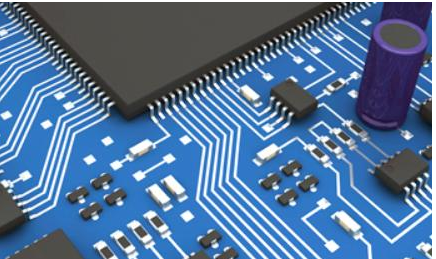The thermal, mechanical and electrical behavior of each PCB depends on the material properties of the PCB substrate, conductors and component materials. Among these different materials, PCB designers can control the behavior of the board to the greatest extent by choosing the correct PCB substrate material. The properties of PCB materials, especially resins and laminates, will determine how your circuit board responds to mechanical, thermal, and electrical stimuli.
When you need to choose a PCB substrate material, which PCB material characteristics are most important to your circuit board? The answer depends on the application of the circuit board and the environment in which the PCB will be deployed. When selecting prepregs and laminates for the next PCB, the following important material characteristics should be considered for your application reference.
Your choice of substrate is no longer limited to FR4, but you should not choose PCB laminate easily. You should first understand how different material properties affect your PCB, and then choose a laminate that can meet your operational requirements. Don't just listen to the marketing presentations of laminate manufacturers; take the time to understand the material properties of each substrate and how they affect your PCB.
You can find some data on the performance of PCB materials on the Internet, but it is best to consult the manufacturer, especially for specialized laminate materials, because no two laminates are exactly the same, and no two are exactly the same. More exotic materials such as ceramics and metal core PCBs have a series of unique material properties.
The important PCB material properties that all designers should understand are divided into four areas: electrical, structural, mechanical, and thermal properties.
Electrical properties
All important electrical properties that need to be considered in today's PCB substrate materials are reflected in the dielectric constant.
Dielectric constant
This is the main electrical characteristic to be considered when the PCB is designed for the lamination of high-speed/high-frequency PCBs. The dielectric constant is a complex quantity, it is a function of frequency, causing the following forms of dispersion in the PCB substrate:
Velocity dispersion: Because the dielectric constant is a function of frequency, different frequencies will experience different levels of loss and propagate at different speeds.
Loss dispersion: The attenuation experienced by a signal is also a function of frequency. The simple model of chromatic dispersion indicates that the loss increases with frequency, but this is not strictly correct. There may be a complicated relationship between the loss and the frequency spectrum of some laminates.
These two effects contribute to the degree of distortion the signal experiences during propagation. For analog signals that operate on a very narrow bandwidth or a single frequency, chromatic dispersion does not matter. However, it is extremely important in digital signals and is one of the main challenges in high-speed digital signal modeling and interconnection design.
Structural properties
The structure of the PCB and its substrate will also affect the mechanical, thermal and electrical properties of the board. These characteristics are mainly reflected in two ways: the glass weaving method and the roughness of the copper conductor.
Glass weave style
The glass weave pattern will leave a gap on the PCB substrate, which is related to the resin content on the board. The volume ratio of glass and impregnating resin is combined to determine the volume average dielectric constant of the substrate. In addition, the gaps in the glass weave pattern produce a so-called fiber weaving effect, in which the substrate dielectric constant that varies along the interconnection line causes deflection, resonance, and loss. These effects become very prominent at frequencies of ~50GHz or higher, which affect radar signals, Gigabit Ethernet and typical LWDSSerDes channel signals.

Copper roughness
Although this is actually a structural feature of printed copper conductors, it contributes to the electrical impedance of the interconnect. The surface roughness of the conductor effectively increases its skin-effect resistance at high frequencies, leading to inductive losses caused by induced eddy currents during signal propagation. Copper etching, copper deposition methods and the surface of the prepreg will all affect the surface roughness to a certain extent.
Thermal performance
When selecting the substrate material, the thermal properties of the PCB laminate and the substrate need to be divided into two groups.
Thermal conductivity and specific heat
The heat required to increase the temperature of the board by one degree is quantified by the specific heat of the substrate, and the heat transferred through the substrate per unit time is quantified by the thermal conductivity. The properties of these PCB materials together determine the final temperature of the circuit board when it reaches thermal equilibrium with the environment during operation. If you deploy your circuit board in an environment that needs to quickly dissipate heat to a large heat sink or chassis, you should use a substrate with higher thermal conductivity.
These two PCB material properties are also related. All materials have a certain coefficient of thermal expansion (CTE), which happens to be the amount of anisotropy in the PCB substrate (that is, the coefficient of expansion is different in different directions). Once the temperature of the circuit board exceeds the glass transition temperature (Tg), the CTE value will suddenly increase. Ideally, the CTE value should be as low as possible within the required temperature range, and the Tg value should be as high as possible. The cheapest FR4 substrate has a Tg~130°C, but most manufacturers offer core and laminate options with a Tg~170°C.
The thermal properties listed above are also related to the mechanical stability of the conductors on the PCB substrate. In particular, the CTE mismatch creates a known reliability problem in high aspect ratio vias and blind/buried vias, in which vias are prone to fracture due to mechanical stress caused by volume expansion. Therefore, high Tg materials and other specialized laminates have been developed, and design engineers engaged in HDI board PCB design may consider using these alternative materials.